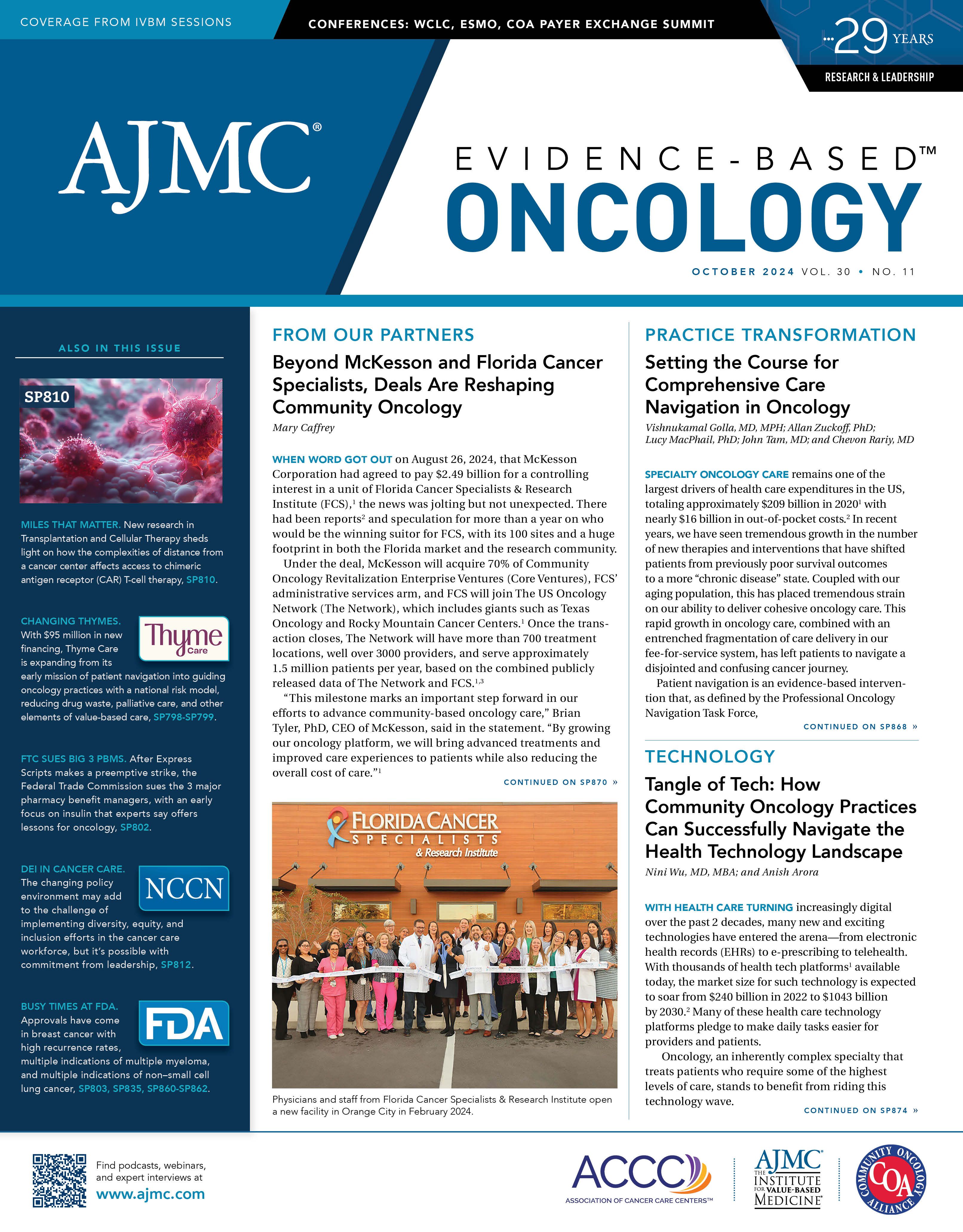- Center on Health Equity & Access
- Clinical
- Health Care Cost
- Health Care Delivery
- Insurance
- Policy
- Technology
- Value-Based Care
Doing Things Differently: Wilfong Moves to Thyme Care
Lalan Wilfong, MD, a 20-year medical oncologist with Texas Oncology, is senior vice president, value-based care, Thyme Care.
On August 27, 2024, Thyme Care announced an appointment that had been rumored for weeks: Lalan Wilfong, MD, a 20-year medical oncologist with Texas Oncology, would join Thyme Care in Nashville, Tennessee, as senior vice president of value-based care.1 Wilfong’s move comes after nearly a decade in a series of value-based care positions with McKesson Corporation and The US Oncology Network.
Lalan Wilfong, MD | Image credit : LinkedIn

Why the change? In an interview and in statements through Thyme Care, Wilfong says he’s motivated to truly tackle practice transformation in oncology. Yes, there have been successes, but achieving the Holy Grail of improved patient experience, better outcomes, and lower costs has been elusive. Thyme Care’s value-based model is a winner, he says, as CMS is finally reimbursing practices for patient navigation—for managing the times “in between” appointments.
“The biggest thing I started recognizing was that the challenge of doing novel contracting the way we’ve historically been doing it was that payers would come up with these programs, then they would have to contract with each practice independently to execute those programs. Sometimes it worked out; many times, it didn’t,” Wilfong said.
It was a far cry from what value-based care promised a decade earlier. Wilfong recalled the excitement in 2013 when Lee Newcomer, MD, MHA, former senior vice president of oncology and genetics at UnitedHealthcare Group, published results from an episode payment program designed to reward quality for patients with breast, colon, and lung cancer. Not only did Newcomer’s team find wide variation in costs for the episodes, but the results for one group also showed that only 14 of 26 patients received the correct therapy.2 Clearly, moving toward standardization would yield better outcomes and savings.
“Think about it,” Wilfong said. “With the second iteration of the cancer episode program, there wasn’t as much out there, so United closed it. United is just now starting to release another program, which is very different.”
The history of the major value-based programs from the other national payers offers more of the same, according to Wilfong—even the Oncology Care Model didn’t yield the savings nationwide that Medicare had envisioned. “We started recognizing the challenges of the way we were doing things historically,” he said. “Everybody wants to have value-based care. Everyone thinks we have to get away from fee-for-service and move toward novel contracting, but there’s challenge after challenge after challenge [in] executing those contracts—both from a payer perspective, in having the contracting ability with practices, and for practices having to think about doing things differently for different payers.
“It’s just a lot of burden and challenges there,” he said.
What attracted Wilfong to the Thyme Care model was the idea that a single entity could contract nationally with payers and then bring that contract to multiple practices. “They’ll have an easier time with execution from their end, to be able to execute on true novel contracts and risk-bearing contracts, and then partner with practices to execute on that,” he said.
In general, Wilfong had not been a fan of third-party entities, so his embrace of Thyme Care was based on the company’s ability to differentiate itself.
“There are other entities out there doing risk bearing for payers, but they’re managing it with utilization management tools or other heavy-handed approaches. One of the things I liked about Thyme Care was that they’re very thoughtful about how we work with our practices; it’s about incentives.
“It’s trying to take the burden off the practices around care management and really [creating] a partnership,” he said. The model calls for partnering with payers to take risk nationally and then forging a partnership with practices for the execution of those risk-bearing contracts.
“This solves some of the problems I was seeing before,” Wilfong said.
References
1. Thyme Care welcomes Dr. Lalan Wilfong to energize oncology’s shift to value-based care. Press release. Thyme Care; August 27, 2024. Accessed September 30, 2024. https://blog.thymecare.com/press/thyme-care-welcomes-lalan-wilfong
2. Newcomer LN, Perkins MR, Donelan SA. Tying payment incentive to quality measurement. J Oncol Pract. 2013;9(3):119-121. doi:10.1200/JOP.2013.000975

